 |
- OTHER SERVICES VOICES:
- MARINES
 - NAVY
 - AIR FORCE
 - ARMY
 - COAST GUARD
|
An up close and personal interview with U.S. Navy Veteran and Togetherweserved.com Member:
PO1 Frank Boffi (USN 1942-1953)
WHAT PERSUADED YOU TO JOIN THE SERVICE?
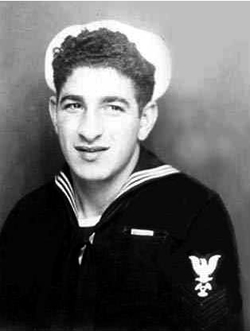 Really I was not persuaded, I was inspired. It was July 4, 1934, I was 12. While watching a parade in my home town of Cranston, R.I. My best friend’s brother was home on leave and marching in the parade. When I saw all those young sailors in the dress whites it made an impression on me. I told my friend, “some day I will be wearing one of those uniforms.” Really I was not persuaded, I was inspired. It was July 4, 1934, I was 12. While watching a parade in my home town of Cranston, R.I. My best friend’s brother was home on leave and marching in the parade. When I saw all those young sailors in the dress whites it made an impression on me. I told my friend, “some day I will be wearing one of those uniforms.”
On Dec. 6, 1941 my present wife and I were engaged to marry. The next day, “a day of infamy” according to President Roosevelt; Pearl Harbor was attacked. Several months later, I was 20 years old and did not want to be drafted into the Army, so I went to enlist in the Navy. It was only 10 weeks after Stella and I married, on Aug 1, 1942. On October 15, 1942, I reported to Newport, RI for Boot training.
BRIEFLY, WHAT WAS YOUR CAREER PATH IN THE SERVICE?
I served two separate enlistments. For my first enlistment, my career path took me from 6 weeks of Boot training and then I was fortunate to be selected to attend Wentworth Institute in Boston, Mass. After 16 weeks of engineering school I graduated as a second class machinist mate, having finished in the top 3 percentile. consequently, I was offered an opportunity to submit my name for consideration to OCS. However, I got no further than the first interview with Commander Cavanaugh; I was rejected because I was married. In those days you could not go to OCS if you were married so off to the fleet I went.
The first ship I was assigned to was the USS Bearnadou DD-153, a 4 stacker that was launched Nov 7, 1917 in Philadelphia Navy Shipyard, commissioned in 1919, it was stationed in Charlestown, S.C. When I reported aboard in mid March I found out why destroyers are called tin cans - she was an old rust bucket!
On May 10, 1943 we were in a convoy on the way to the Mediterranean Sea. We had made 3 invasions with that ship in the Mediterranean Sea and managed to survive. We were underway in late May 1944 for England to be a part of the D-day Battle in Northern France. About one day out of Gibraltar we were ordered to turn West bound for Charlestown, SC. A couple of days after we arrived I received orders to take 10 days leave and then report to Norfolk, Va for 16 weeks of school for new construction. I was assigned to the USS Frank Knox, a 2200 ton destroyer being built in Bath, Maine.
During the 16 weeks I made a swap to a west coast-built ship, I finally ended up on the USS Hadley DD 774. The Hadley was a Sumner Class 2200 ton new ship. I reported to San Pedro, Ca. early October 1944 and watched the remainder of the construction of the ship as part of the skeleton crew. We were also responsible for checking aboard all the equipment assigned to the Engineering Division. After a lengthy shake down we left from Long Beach, California bound for Pearl Harbor where we became part of the Pacific Fleet. After about three months we were part of the invasion force at Okinawa on April 1, 1945.
The Hadley was my home until the fateful day, 11 May 1945, when we became a part of Pacific war history. I was honorably discharged on Nov 5, 1945. One point of note is that the Bridge from the Hadley is in the Pacific War Museum in Fredericksburg, Tx. It is adorned with 25 Jap flags for the planes we shot down during that battle.
In October 1950, during my second enlistment, we were having night battle exercises with a mock invasion force when we were involved in a collision with the USS Roan. We were fortunate in that we had no casualties but we did lose about 38 ft of our bow. There were 4 fatalities and several injured sailors aboard the Roan. We sailed into Bermuda where they cut of the damaged bow and welded a piece of ½" flat steel to make it water tight. We then went to the Philadelphia Navy yard where we had a new bow installed. On April 1, 1950 we were sent to Iceland supposedly to quell some Russian activity that was suspected to threaten our air base there. After 10 days of no activity we sailed to Plymouth, England for R & R then onto the Med for a 6-months cruise. Unfortunately it was shortened in July when I was transferred to Chelsea Naval Hospital with a case of ulcers. After 4 weeks of treatment I was assigned to the USS Fiske DD-842 until Sept 1953 when I was discharged to civilian life again, ending my naval career.
DID YOU PARTICIPATE IN COMBAT OPERATIONS?
I participated in three invasions in the Med, one in Sicily and two in Italy. When I was assigned to USS Hadley we were involved in a history making air/sea battle in Okinawa, we lost the ship to three Kamikazes and two bombs.
When I was aboard the USS Bearnadou DD-153 we were sent on a chase of an alleged Sub attack of a US Merchant ship somewhere between Sicily and North Africa. To the best of my memory, we found only some debris and a couple of oil slicks. I'm not sure if it ever was confirmed as a sub attack. In 1943 we participated in "The Sicilian Campaign," where we shelled the beach during the landing of US Troops. For several days we were on anti-aircraft patrol but encountered nothing of any real consequence. We also participated in the 1943 invasion of Salerno, Italy. We shelled the beach during the landing of US Troops and performed anti-aircraft patrol.
On January 22, 1944, while still aboard the Bearnadou, we participated in the Invasion of Anzio Beach, Italy. This was an interesting venture as our military had no idea where the shore batteries were. Our squadron consisted of the USS Dallas, USS Cole and USS Bernadou and we were used as decoys to draw enemy fire. We approached the beach and at midnight we were ordered to turn on our search lights to draw enemy fire. Well, it wasn’t very long before all hell broke loose. All three ships made a 180 and headed to the rear of the troop carriers and landing craft. We sustained a minor leak in the forward engine room when a riveted seam broke loose and water began seeping in. We were there for a couple of weeks and eventually got some day time liberty in Naples. As an added memory of this battle; we witnessed the bomb hit on the USS Savannah. We later escorted her to Malta for repairs in a British dry dock area. I had recently received a letter from my younger sister telling me that Louis Meschino, a friend of mine I had grown up with, was on the Savannah. I was granted permission to visit the ship and try to see him but I was informed that he was in the #1 gun mount that had taken a direct hit by an enemy bomb and did not survive.
In late May 1944 we were underway for Northern Europe to be a part of the D-day battle. When we were about one day out of Gibraltar we were ordered to turn West and report to Charlestown, SC. After a short leave I was ordered to report to Norfolk, VA for 16 weeks of "new construction” and following that I was assigned to the USS Hadley DD-774, a new ship.
While I was assigned to the Hadly we participated in the Battle of Okinawa. That was a history making campaign that earned the ship both the Presidential Unit Citation and the name of “Champion Kamikaze Killer”. I also received my Purple Heart from this battle.
We were part of the invasion forces on Easter Sunday. April 1, 1945 where we were involved for several days in shore battery, a couple of convoys and then on the picket line.
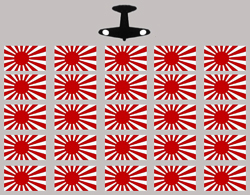 On May 11, 1945 The Hadley was on picket station 15. Around 8:30 am the Hadley began fighting valiantly against waves of hostile suicide and dive-bombing planes plunging from all directions with the Hadley sending up relentless barrages of antiaircraft fire. During this fight the Hadley destroyed twenty three enemy planes. But unfortunately, the ship was crashed by two bombs and three suicide planes with devastating effect. It flooded the engineering spaces and started a fire amidships. The Officers and men of the Ship fought desperately and eventually brought the damage under control, enabling the ship to be towed to port and saved. However, the Hadley had been damaged beyond repair and was decommissioned. On May 11, 1945 The Hadley was on picket station 15. Around 8:30 am the Hadley began fighting valiantly against waves of hostile suicide and dive-bombing planes plunging from all directions with the Hadley sending up relentless barrages of antiaircraft fire. During this fight the Hadley destroyed twenty three enemy planes. But unfortunately, the ship was crashed by two bombs and three suicide planes with devastating effect. It flooded the engineering spaces and started a fire amidships. The Officers and men of the Ship fought desperately and eventually brought the damage under control, enabling the ship to be towed to port and saved. However, the Hadley had been damaged beyond repair and was decommissioned.
It was in this battle that I was burned over 85% of my body. We ruptured a 600 PSI 490 degree steam line in the forward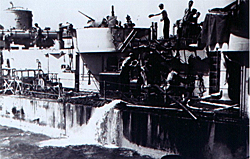 engine room, which was was my duty and battle station. I happened to be in the lower level helping with feed pump problems and therefore had to come up two levels through live steam to make it to the main deck. I was picked up by an un-known ship and transferred to the USS Solace, a Navy hospital ship. The next 4+ months were spent in naval hospitals for the burns I had received. I was initially at Tinian Island Tent-city hospital in the Mariana Islands and from there I was sent to the receiving hospital, San Francisco for further transfer to Cour D’Alene, Idaho at the Farragut Naval hospital. In mid-August I was sent to Sun Valley, Idaho Naval Convalescent Hospital to follow-on treatment. I was discharged on 5 November 1945 from the Fargo Barracks, Boston, MA to my home in Cranston, RI. engine room, which was was my duty and battle station. I happened to be in the lower level helping with feed pump problems and therefore had to come up two levels through live steam to make it to the main deck. I was picked up by an un-known ship and transferred to the USS Solace, a Navy hospital ship. The next 4+ months were spent in naval hospitals for the burns I had received. I was initially at Tinian Island Tent-city hospital in the Mariana Islands and from there I was sent to the receiving hospital, San Francisco for further transfer to Cour D’Alene, Idaho at the Farragut Naval hospital. In mid-August I was sent to Sun Valley, Idaho Naval Convalescent Hospital to follow-on treatment. I was discharged on 5 November 1945 from the Fargo Barracks, Boston, MA to my home in Cranston, RI.
FROM YOUR ENTIRE SERVICE CAREER WHAT PARTICULAR MEMORY STANDS OUT?
I would have to say it was the “big” battle of the USS Hadley on 11 May 1945. Seeing the Kamikazes coming right at me, when I was up on deck after we had to abandon the engine room was a feeling I couldn't begin to describe just as was seeing a torpedo running along the side of us. I had just come out of the engine room hatch and I heard the enunciator getting a signal. It was for an emergency astern for the starboard engine and flank ahead for the port engine. I looked over the side and about some 40/50 feet out I witnessed a torpedo running in the same direction we were traveling. We were extremely lucky that it was spotted in time for us to maneuver out of its path.
DO YOU HAVE A PARTICULARLY FUNNY STORY FROM YOUR SERVICE THAT YOU WOULD LIKE TO SHARE?
It was in 1950 and I was assigned to the USS Brownson, we were in Western Italy at the time and during a port call I had the opportunity to meet with some extended family from my Mother's side. They were all farmers and it so happened that we were only about 10 miles from their location so I called to see if we could set up a meeting while I was there. In speaking with my uncle he relayed that his mother said there was no sense in making a long horse and buggy ride to meet with an American sailor, family or not, if they wouldn't even be able to understand each other! I started speaking Italian on the phone and would you believe that it was only a couple of hours before several family members had arrived to visit with me. One member of the group that came to visit me was a young girl, a cousin of mine and while we were visiting she kept touching my leg and I was amused by the way her Mother put a stop to that very quickly. She said "family or not, he's a US Sailor and you need to watch yourself around him!"
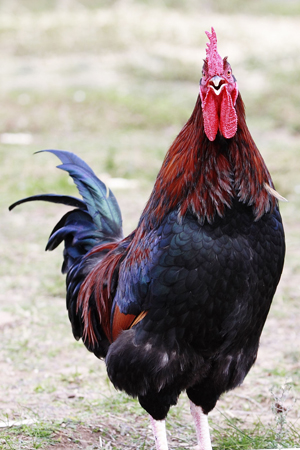 During those days it was customary for family to bring food for service members to cook for themselves and she was kind enough to bring a large cake, several dozen eggs and a big rooster that must have weighted at least 20 pounds. I didn't know what in the world I was going to do with that rooster but I finally decided to take it back to the ship and see if the Captain's Steward would cook him up. I went back to the ship with this rooster on a string, it was to big to carry, and so I had to keep booting in the back side to get it to walk up the gang plank. I saluted the colors and turned to the OOD and requsted to come aboard while standing there with this rooster on a string. He said "Boffi, what the hell have you got there?" I told him we need to get this thing to the Captain's steward and have a special meal tonight, which is exactly what we did. A big group of us dined on that rooster right there on the fantail! During those days it was customary for family to bring food for service members to cook for themselves and she was kind enough to bring a large cake, several dozen eggs and a big rooster that must have weighted at least 20 pounds. I didn't know what in the world I was going to do with that rooster but I finally decided to take it back to the ship and see if the Captain's Steward would cook him up. I went back to the ship with this rooster on a string, it was to big to carry, and so I had to keep booting in the back side to get it to walk up the gang plank. I saluted the colors and turned to the OOD and requsted to come aboard while standing there with this rooster on a string. He said "Boffi, what the hell have you got there?" I told him we need to get this thing to the Captain's steward and have a special meal tonight, which is exactly what we did. A big group of us dined on that rooster right there on the fantail!
WHICH INDIVIDUAL PERSON FROM YOUR SERVICE STANDS OUT AS THE ONE WHO HAD THE BIGGEST IMPACT ON YOU...AND WHY?
Paul W. Beaupre, also a first class MM, a shipmate from the USS Bernadou. We met in boot camp and became like brothers for the next 67 years. He was a little older and was my idol as a “big brother.” He got me back to my faith and set many examples of how to treat people and to be an “upright” person. We just lost him just a few months ago.
WHAT PROFESSION DID YOU FOLLOW AFTER THE SERVICE AND WHAT ARE YOU DOING NOW?
I retired as a Boiler & Pressure Vessel inspector/ Certified Safety Professional for the insurance industry. In 1959 I passed 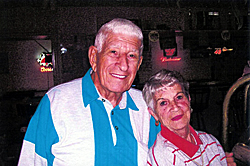 the two day exam in NYC for my certification of the National Board of B&PV Inspectors and then in 1975 I passed the exam for my CSP designation. I worked mostly in the engineering field as a toolmaker and as a diagnostic engineer. the two day exam in NYC for my certification of the National Board of B&PV Inspectors and then in 1975 I passed the exam for my CSP designation. I worked mostly in the engineering field as a toolmaker and as a diagnostic engineer.
How has serving in the Navy influenced the way you now approach your life and career?
It certainly was the major factor in the Career I pursued after the service and I feel certain it had a major impact on the life I lived and the person I would eventually become.
WHAT ADVICE WOULD YOU HAVE FOR THOSE THAT ARE STILL SERVING?
I would tell anyone that asks that I sincerely love the Navy. I didn't stay in and make it a career for various family reasons but I always thing of my time in the Navy and how much it meant to me. I would advise anyone who is currently serving to think long and hard about all of your options before making a decision to move on out of the service. Don't take for granted the opportunities you have available to you, take advantage of every option you have while you can.
HOW HAS TOGETHERWESERVED.COM HELPED YOU TO MAINTAIN A BOND WITH THE SERVICE AND THOSE YOU SERVED WITH?
As I've mentioned already, I love the Navy. While I'm relatively new to TWS I've really come to appreciate all that the site has to offer. I really appreciate and enjoy the ability to get connected with others that I served with, share my story, and stay connected to the Navy after all these years.
|

PO1 Frank Boffi
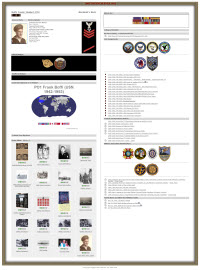
View PO1 Frank Boffi's Shadowbox on TWS
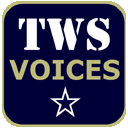
Read Other Interviews in the TWS Voices Archive
|
|
Share this Voices on:


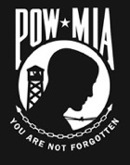

|
|
TWS VOICES
TWS Voices are the personal stories of men and women who served in the US Military and convey how serving their Country has made a positive impact on their lives. If you would like to participate in a future edition of Voices, or know someone who might be interested, please contact Major Wesley Prater HERE.
This edition of Navy Voices was supported by:
Navy.Togetherweserved.com
For current and former serving Members of the United States Navy, TogetherWeServed is a unique, feature-rich resource enabling Naval personnel to re-connect with lost Shipmates, share memories and tell their Navy story.
To join Navy.Togetherweserved.com, please click HERE.
|
|